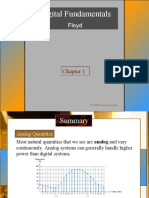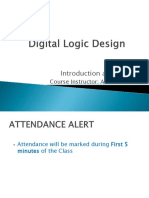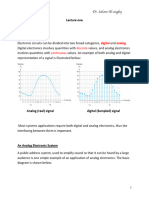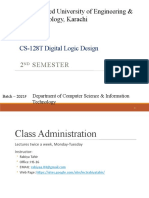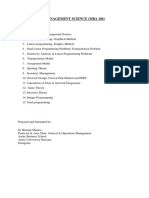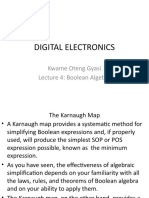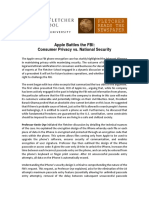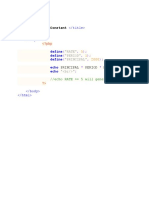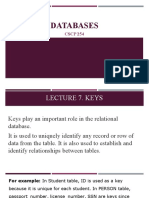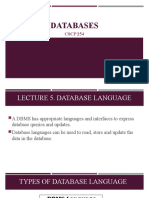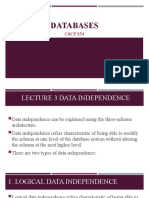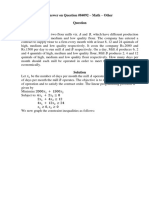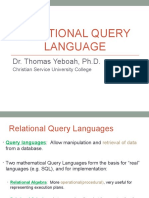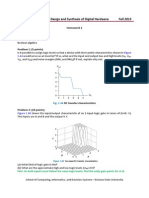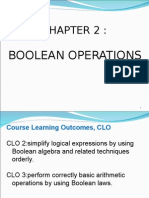0% found this document useful (0 votes)
153 views19 pagesDigital Electronics Intro Lecture
Digital electronics can be divided into digital and analog categories. [1] Digital electronics involve quantities with discrete values represented by two states, while analog involves continuous values. [2] Most things in nature are analog, but digital has advantages for processing, transmission, storage and noise resistance. [3] Logic gates perform basic logic functions like AND, OR and NOT on two-state digital signals.
Uploaded by
Operation ResearchCopyright
© © All Rights Reserved
We take content rights seriously. If you suspect this is your content, claim it here.
Available Formats
Download as PPTX, PDF, TXT or read online on Scribd
0% found this document useful (0 votes)
153 views19 pagesDigital Electronics Intro Lecture
Digital electronics can be divided into digital and analog categories. [1] Digital electronics involve quantities with discrete values represented by two states, while analog involves continuous values. [2] Most things in nature are analog, but digital has advantages for processing, transmission, storage and noise resistance. [3] Logic gates perform basic logic functions like AND, OR and NOT on two-state digital signals.
Uploaded by
Operation ResearchCopyright
© © All Rights Reserved
We take content rights seriously. If you suspect this is your content, claim it here.
Available Formats
Download as PPTX, PDF, TXT or read online on Scribd
/ 19










